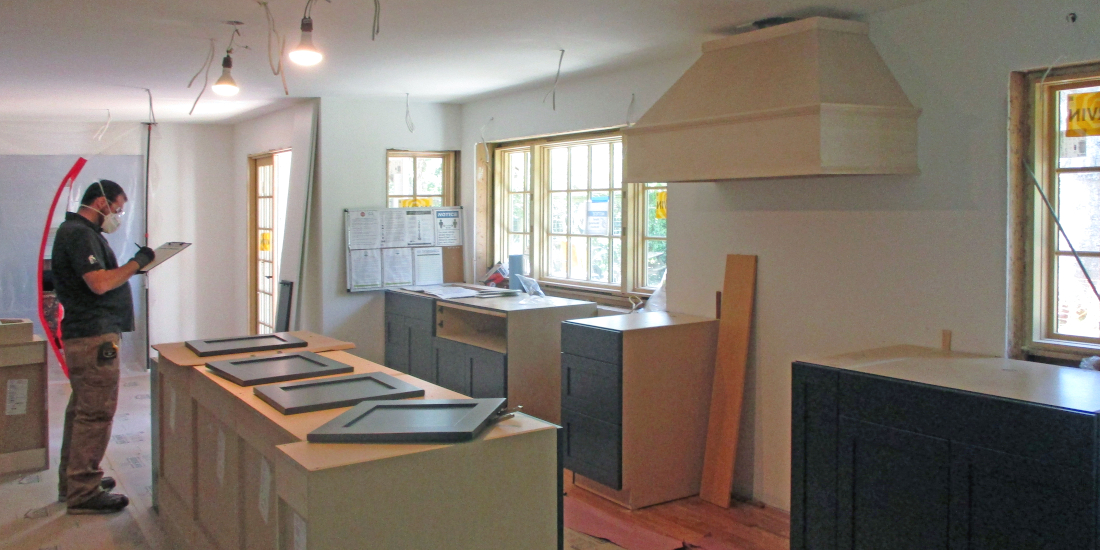
Q: I was right in the middle of a remodel when the Stay Home, Stay Safe order was put in place and most construction was deemed nonessential. Now that some residential construction has been allowed to resume, I’m nervous about having people in my home. What COVID-19 safety protocols are builders following?
A: On April 24, 2020, Governor Inslee announced a plan to restart some residential construction, which had mostly been shut down as part of his Stay Home, Stay Healthy order issued on March 23. The Phase 1 Construction Restart COVID-19 jobsite requirements include many important rules that must be strictly adhered to by contractors in order for work to proceed.
Projects that are deemed essential have been allowed to continue throughout the stay home order, including home maintenance and emergency repairs. Some projects may be completed if they are creating spoliation or poor hygiene and sanitation issues, such as home remodels of a single bathroom and/or a kitchen. Essential work also includes urgent repairs to building hazards such as water leaks.
If your remodel is considered “low-risk” and was already underway, permitted, or had a signed contract prior to the Stay Home, Stay Safe order on March 23, then it is now allowed to resume under the Phase 1 requirements. Low-risk projects mean all work can be completed while maintaining six feet of social distancing between workers.
If you have a project underway at your home, protect yourself and your family by familiarizing yourself with your builder’s plan and what remodelers are allowed to do in your home. Here are some of the key elements:
Sanitation and hygiene
All workers on the jobsite are required to wash their hands for at least 20 seconds; handwashing station(s) must be installed at each jobsite so running water is available for all workers. Hand sanitizer is not a substitute for running water.
Personal protective equipment (PPE)
Masks, in accordance with Washington Department of Health guidelines or as required by Washington Department of Labor and Industries safety rules, must be worn at all times by every person on the jobsite. Masks can be cloth coverings depending on the job being performed and must be accompanied by both gloves and eye protection. Glove type is based on the needs of the task being completed—if the task isn’t usually performed with gloves, then nitrile or latex gloves can be worn. Depending on the size and scope of work, more stringent PPE may be required.
Social distancing
All workers on the jobsite most maintain six feet of distance at all times. If they cannot perform their work at this distance, the project will not be considered low-risk and must wait. A COVID-19 Safety Supervisor must be assigned to each jobsite. The number of workers on any jobsite should be limited to prevent gathering and spreading of germs, and breaks should be staggered to ensure no large gatherings. Workers are required to keep a distance of 10 feet from any occupants of the home.
Other safety requirements include monitoring of employee health, which includes taking temperatures of all workers; safety signage and training; frequent cleaning and disinfection; and a daily sign-in sheet to track all visitors.
Some other things homeowners should consider:
Ask to see your contractor’s COVID-19 plan. All workers onsite will be required to follow the plan. Get comfortable with the protocols and be aware of who is working in your home. You should feel safe and sound! Most professional contractors already had safety protocols in place long before the pandemic. Since they are used to wearing PPE, following safety requirements, and having site protection, the Phase 1 requirements should be simple to adhere to.
Be wary if a contractor can start your new project now. Only projects signed into a construction contract prior to March 23, 2020 are to be performed if they fall in the low-risk category. If someone offers to start a new project before Phase 2 is announced, this may be in violation of the law, unless the work is deemed essential.
When followed properly, these requirements are meant to keep builders, remodelers, and homeowners safe during this time.
Melissa Irons, CGR CAPS CGP, is the marketing and operations manager for Irons Brothers Construction Inc., a member of the Master Builders Association of King and Snohomish Counties (MBAKS). If you have a home improvement, remodeling, or residential homebuilding question you’d like answered by one of MBAKS’ more than 2,600 members, write to homework@mbaks.com.